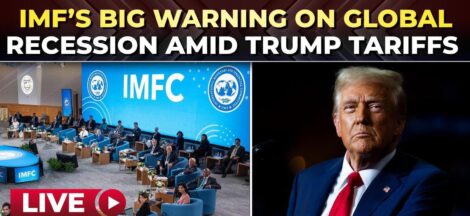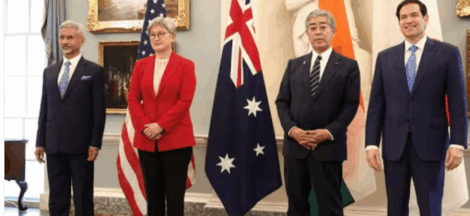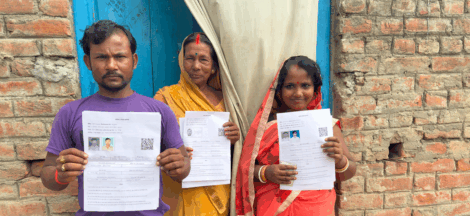By Dr. Gyan Pathak
EVM concerns have cropped up again, because the older Electronic Voting Machines (EVMs) are still in use in large numbers, newer EVMs that come with Voter Verifiable Paper Audit Trial (VVPAT) paper record are not comprehensive enough, and even all the VVPATs are not counted to match the actual votes polled. Tampering and vulnerability are therefore not ruled out, and even some time back a research paper has found “irregular patterns” in Lok Sabah election results 2019.
INDIA alliance Meet of 28 opposition political parties held on December 20, 2023 had even passed a resolution expressing doubts about the integrity of the functioning of electronic voting machines and demanded that VVPAT slips be handed over to voters and its 100 per cent counting done later, so that people know that their votes were not manipulated.
The constituent political parties in INDIA alliance had even alleged in the resolution passed that India parties had submitted a detailed memorandum to ECI with several specific questions on the design and operation of the EVMs. However, unfortunately, the ECI has been reluctant to meet an INDIA delegation on that memorandum. The resolution alleged that the poll body had not yet responded to their concerns.
It should be recalled that only a few months ago in August 2023 a research paper titled “Democratic Backsliding in the World’s largest Democracy” by an Assistant Professor Sabyasachi Das of the Ashoka University had said on the basis of McCrary test result, “While the result is consistent with possible manipulation of the election results in favour of the BJP, the incumbent party, it is not the only interpretation. Alternatively, it could be that BJP, being the incumbent, was able to exercise ‘precise control’ over win margin, ie, it was able to precisely predict win margins, especially in constituencies where close contest was expected, and was able to affect it, thanks to its comparative advantage in electoral campaigning and greater access to resources.”
“If the Election Commission and/or the Government of India have any answers available to refute these arguments, they should provide them in detail,” the Congress MP Shashi Tharoor had demanded in his tweet, while Ashoka University has distanced itself by saying that it was dismayed by the speculation and debate the paper has triggered.
However, the question – Were the 2019 election results were manipulated or controlled? – remained unanswered by the Election Commission of India creating further mystery over the entire voting and counting systems through old and the new EVMs.
“Our suggestion is simple: Instead of the voter-verified paper audit trail (VVPAT) slip falling in the box, it should be handed over to the voter who shall then place it in a separate ballot box after having verified his or her choice. 100% counting of VVPAT slips should then be done,” the resolution adopted unanimously at the opposition alliance meeting said.”This will restore full confidence of the people in free and fair elections,” it further read.
It should be noted that mandatory verification of VVPAT slips of only five randomly selected polling stations of each assembly constituency or each assembly segment is done in case of election to the Lok Sabha before declaring results.
Among the chief concerns regarding EVMs included lack of paper trail, making it difficult to prove any tampering or manipulation. Newer EVMs come with VVPAT which provide paper records, but all of them are not counted and they are yet to replace older EVMs.
There have been accusations of tampering and vulnerabilities in EVMs, and in many cases actions have been taken against officials. However, allegations refuse to die that EVMs can be tampered with before, during, or after elections to manipulate voting results. The vulnerability of EVMs to hacking or external electronic wireless interference have also been serious concerns for a long time. Questions also remain unanswered regarding manufacturing, storage, and transportation of EVMs, because of sporadic reported news creating doubts among the people, indicating lack of transparency. The digital divide is another issue that is raked against possible misuse of EVMs when illiterate votes find difficulties in using them.
Though ECI assures EVMs are thoroughly tested and verified by independent agencies before and after each election, and the machines are not vulnerable to hacking or manipulation, the election body’s not responding to the concerns of the opposition political parties and not answering the question raised by the research papers remain mysterious.
Though VVPAT implementation with newer EVMs and 100 per cent counting has been demanded by the opposition INDIA alliance, some of the experts still argue that it would not be foolproof against manipulation since it would only be an additional layer of verification, nothing more.
It is in this backdrop INDIA alliance has demanded introduction of a full paper trail or independent audit, which has never been done in the past after the introduction of EVMs in 1982 in India, and are being used in all national and state elections in the country since 2004.
INDIA alliance has submitted a memorandum to ECI on August 9, 2023, detailing their concerns about EVMs. However, after not getting any proper response from ECI, the alliance has passed a fresh resolution on December 20. Congress General Secretary Jairam Ramesh has even sent a later on December 30 to ECI in this regard, and response from ECI is awaited.
Jairam Ramesh has later said, “We have been trying to meet with the ECI to hand over a copy of this resolution and have a discussion but have not been successful so far in doing so.” He added further that ECI has issued a clarification on August 23, 2023, but was only generic in nature and does not answer out concerns. A rejoinder was sent to ECI on October 2, 2023 through our counsel informing that their specific concerns were remained unanswered, however, no opportunity for meeting and hearing has been provided yet to INDIA parties’ delegation despite repeated requests. (IPA Service)



